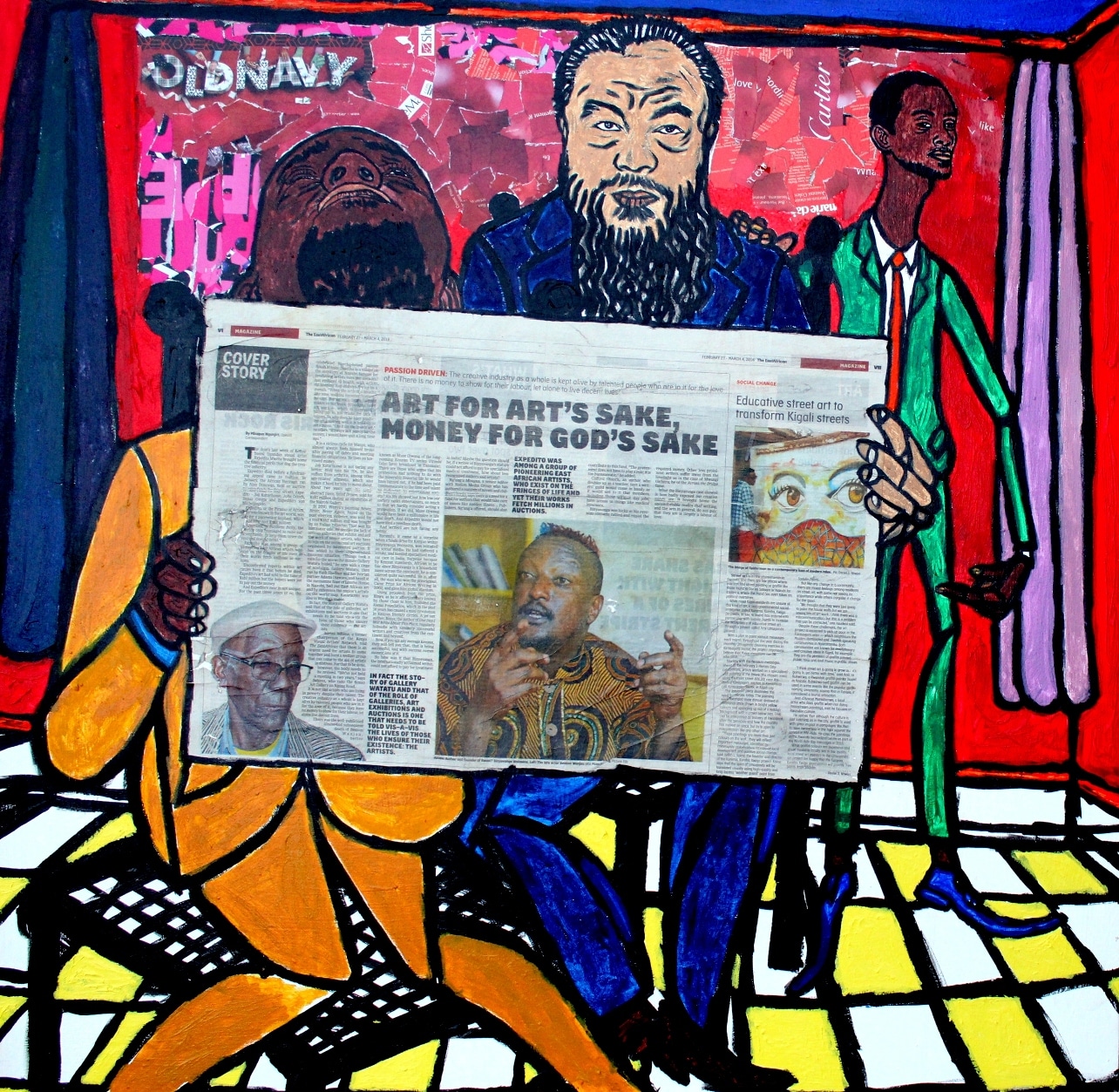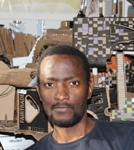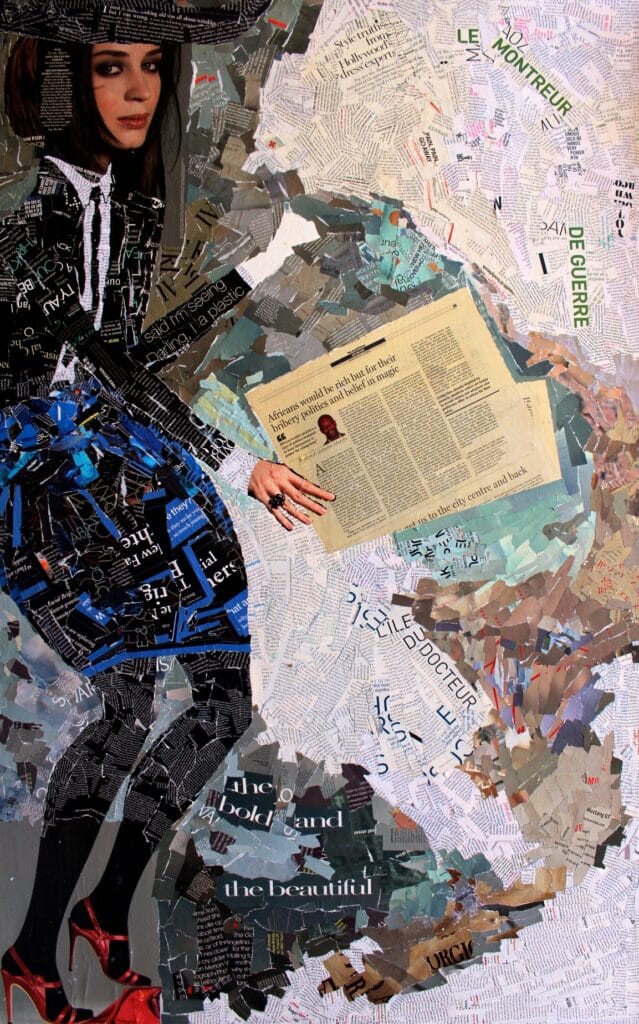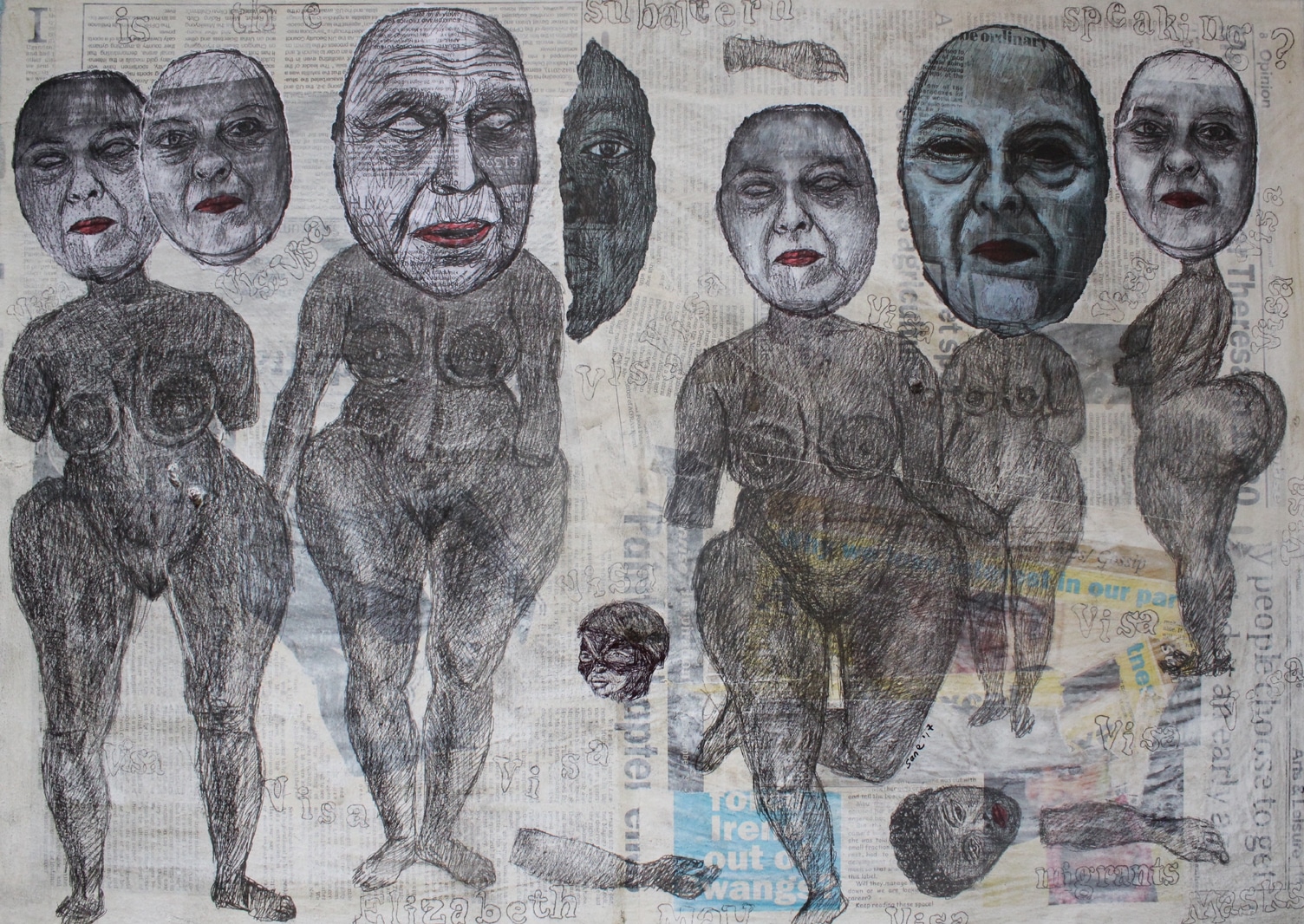AGN: You sign your work with the name SANE, how did you come about that name?
ENS: SANE is a pseudonym that puts together all of my names.
AGN: When did you become interested in Art?
ENS: It all started when I was a young boy. My elder brother was great at drawing. His work inspired me to try and I soon discovered I had a passion for it. My high-school education was attained at Kings College, Budo and I attended art classes while I was there.
AGN: How would you describe your artistic style?
ENS: At my core I am a painter. When I was emerging professionally in the late 1990’s/early 2000’s I adopted a style I would say that falls under the banner of ‘Indigenous Expressionism’. During that period I accepted an invitation to join a collective set up by some fellow Ugandan artists called the ‘Index Mashariki’ (Indigenous Expression Mashariki Africa). The collective’s remit was to provide a platform to create greater exposure and commercial activity for our work around the world. Relationships were developed with international contacts in order to do so. Since that period my style has evolved to what I would describe as somewhere between Afro-surrealism and Afro-futurism.
AGN: What inspires you and what has influenced your artistic style?
ENS: I draw inspiration from the world around me, such as the activities of the common man and my own life experiences. I also draw inspiration from nature. I realized that it was necessary to look at the political as well as the social factors that influence human behaviour.
I would say that aspects of my work were overtly political in relation to Ugandan politics during the early 2000’s to around 2010. Concern about ending up in detention impacted my decision to follow a more nuanced depiction of Ugandan politics.
As a result of several trips to Europe from around 2004 and in particular, my encounter with the ‘Zwarte Piet’ (Black Pete) phenomenon, a celebration that struck me as a racist idea made to appear mundane and harmless while inwardly damaging people who are of the black, brown skin colour of the Zwarte Piet character; I became more direct in speaking up about racism through my work. Although I never actually lived in The Netherlands, I visited the country a few times solely in relation to my work as an artist.
My experiences there transformed how I viewed myself from an African man in Uganda to my place in the world as a black man.
Ironically my first trip to Europe took me to Germany in 2004 for an artist residency program to which I had been invited. I recall a friend and I being called apes from the occupant of a passing car. I found this both offensive and strange as it was the first time I was experiencing such behaviour.
Other than that, due to the nature of such events where one remains in a microcosm, being introduced to welcoming people who have an interest in what I do, I would say my time in Germany was fairly pleasant in the main although possibly unrepresentative of what my experience would have been like if I had moved around more freely and lived there for a while.
Trips to The Netherlands allowed for me to interact more widely and truly experience the wide range of attitudes towards black people that exist in Europe. It was a real eye opener.




